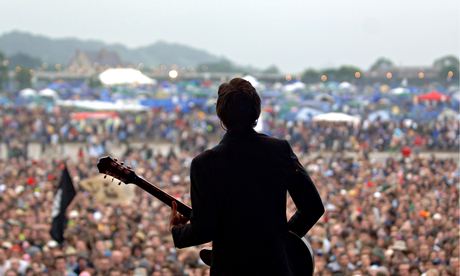
The rock'n'roll novel is not a genre garlanded in glory. One problem is that even the most lurid fantasies about pop fame wilt against the on-road excesses revealed by a memoir such as Mötley Crüe's The Dirt or Nick Tosches's sulphurous Jerry Lee Lewis biography, Hellfire. Pop fiction will always struggle to match pop fact. It's no accident that one of the most successful rock novels is about a bloke who works in a record shop, the fan's-eye view that is Nick Hornby's High Fidelity.
Hornby's book, like Roddy Doyle's soul revivalist band the Commitments in the novel of the same name, shares with readers the commonality of music itself; everyone knows how Mustang Sally sounds. It's easy enough to generate a band name, conjure up some outlandish players and snappy song titles, but the music that an imaginary band makes remains entirely in the author's head.
In The Thrill of it All (named after a Roxy Music song) Joseph O'Connor combines both approaches. His fictional group, Ships in the Night, formed in the grim crucible of Luton Polytechnic circa 1982, become a global success, fronted by the Bowie-esque Fran Mulvey, a Vietnamese orphan raised in Rotherham. Yet the novel also has cascades of Hornbyesque lists – of records, artists, poets – and walk-on parts for the likes of Patti Smith and Elvis Costello.
The narrative comes as a memoir by the Ships' guitarist, Robbie Goulding, son of an immigrant Irish family settled in Luton, interspersed with interviews from the three other band members, lead singer Fran, cellist Trez and her twin brother and drummer Séan. The cross-dressing Fran remains an out-of-focus cipher – at one point he's described as "a Miro lithograph in knickers" – but geezerish Séan and sensible, intellectual Trez are neatly drawn.
As usual with bands, the early years of struggle are the most arresting. O'Connor cannily evokes the mid-80s, the era of Thatcherite iron rule and "Trotskyists in designer suits", when pop still had cultural and even political clout, along with the grime of shoestring touring to uninterested audiences, shabby rehearsal studios reeking of "piss, chips and sadness" and squalid New York crash pads. Success proves less interesting; for non-combatants, recording studios and tour itineraries are a bore.
O'Connor has clearly learned much from the career of his famous sister, Sinéad, yet the most important people in the life of a stadium band – tour managers, fixers, minders, sound men – are oddly absent. So, too, is a clear sense of the Ships' music – being told that "our aim was to blend the shimmer of the high-octane torch song with romping, sixteen-wheeler guitar" illuminates nothing. One suspects they sound much like U2.
What it meant to be second-generation Irish in Britain provides a fruitful subplot. Some of the funniest, most tender moments are the exchanges between Robbie, the rebellious son, and his staid but loving father, Jim, who rails endlessly at the "Daisy" his son is becoming ("Terrible smart aren't you, Prince Fucky the Ninth"), but who treats fey, bisexual Fran with old-school courtesy. When Robbie flies out his parents to a San Francisco show, Jim hates the luxury hotel: "The refusal to enjoy himself was his Irish mode of enjoying himself, and I was happy to have given him the chance."
The novel's third act – the aftermath of success and, in Robbie's case, decline and fall – confirms that this is less a tale of pop dissolution than of family. Most bands function as dysfunctional families after all. While the major part of the book casts Robbie as chronicler to the charismatic, druggy Fran – Nick Carraway to the singer's Gatsby – the finale turns the spotlight on his own quest for the rock'n'roll grail. Though for Robbie that comes in the shape of a 1955 Fender Stratocaster, the real grail remains, as ever, love and redemption.

